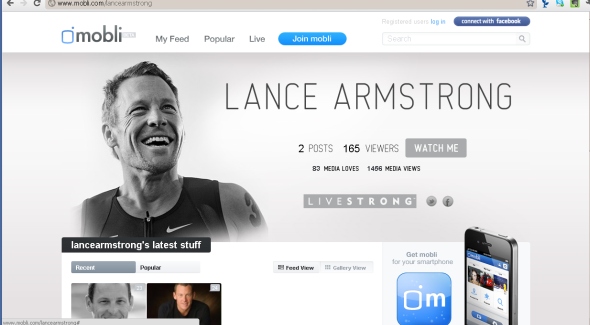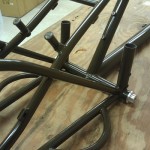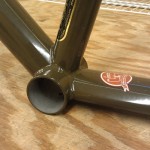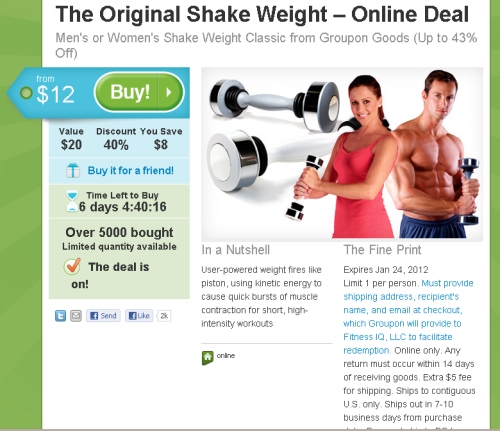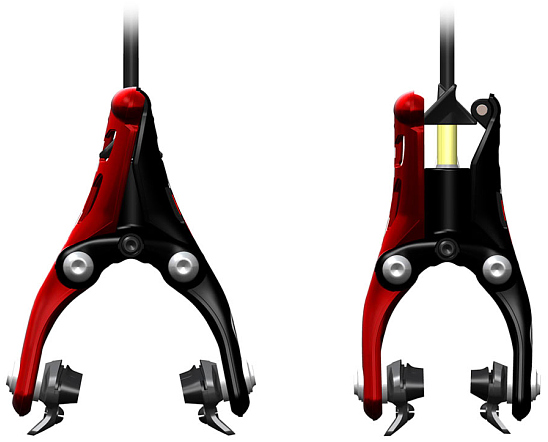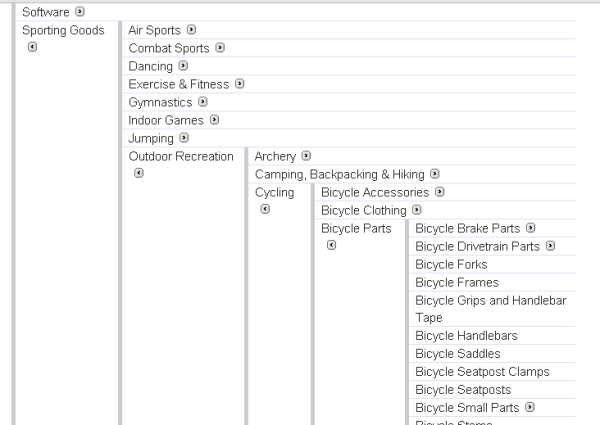
Google's censored doodle for January 18th, protesting SOPA.
I just finished sending e-mails to my various representatives, expressing opposition to SOPA, so it seems like a particularly good day to be talking about what the Internet can do for you. On a day like today, it’s nearly possible to imagine a level playing field, where communication and information between individuals isn’t owned or controlled by anyone.
So it’s a good day to look at some free resources that are out there to help small businesses ease into the wild and wacky world of e-commerce.
I’ve been stressing all along the value of creating good content. Lest you think it’s just me, consider this short article from FastCompany.com, bemoaning the absolute lack of quality content out there. If the big companies–in every industry–were getting content right, some of what’s described in that article wouldn’t be possible; there’d be no opportunity to distinguish yourself among a bunch of white noise, because all the big companies would have already nailed content. But they haven’t, so there is. And that’s where your authenticity and knowledge as a small retailer comes in handy.
So to communicate that, you want to polish up your content, and it’s never been easier. Let’s look at images.
The old adage “An Image Says a Thousand Words” applies more than ever when it comes to digital merchandising. Maybe video will overtake images at some point as the most valuable media asset for a web retailer to generate sales, but it hasn’t happened yet. There are so many methods for searching out quality photos on the web or taking and filing away photos these days, that I don’t think it beneficial to waste time here on the obvious steps like “buy a camera” and “upload” your photos.” Suffice to say, cameras capable of high-quality photos are available for next to nothing, and most phones today take half decent photos, if not the quality of a dedicated camera. Keep in mind, we’re looking for web quality here, which isn’t as demanding as print quality, so you don’t need to hook yourself up with a $6,000 camera in order to sell things on the Internet. Another non-factor is uploading and storage. There was a time when just getting photos up to a site required a file transfer program or some ingenuity, but everything from Flickr to Google+ will let you upload and organize images pretty easily, and storage size is a non-issue. Better still, the recent versions of WordPress I’ve been discussing as the foundation of our first e-commerce configuration make uploading images, or linking directly to them from a storage area by inputting the image’s URL (the thing that’s in your browser’s address bar when you’re viewing a single image) extremely easy. Bottom-line: taking and storing images is a non-issue.
Other details are more important, though. Here are some things to consider when getting ready to “merchandise” or put a product up for sale on-line.
- Find Photos from the Manufacturer or Take Your Own?
It’s almost always better to own your assets–in other words, take your own photos. This is true for a bunch of reasons, including that authenticity you hear me blathering on about so much. People want to see what you have, not the generic image. Potential buyers don’t like seeing the same factory photo everywhere they go, and they’ll often find unique photos more compelling, provided the quality isn’t poor. If you’re only listing a few products to test the e-commerce waters, you can usually shoot a bunch of photos of your product yourself, another advantage to being a little guy. If you absolutely lack a physical space to shoot photos or for some reason can’t unpackage an item for photos, using an image from the company’s site may be your only option. Never take an image from an on-line retailer, and be careful in general, as photos are property. There are cases where even the manufacturer doesn’t want its photos being used by unauthorized people. When in doubt, shoot your own photos.
- Shoot a Lot of Photos
You want to take as many photos as possible, from as many key angles as possible. Have the potential buyer in mind. He or she may want to know even the slightest detail, so, if it’s a bike frame we’re photographing, don’t hesitate to get photos of the underside of the bottom bracket shell. Whenever possible always take a photo of what’s included in the box, another preemptive way to answer a lot of questions for consumers, and even how the item will be packaged when it arrives. Your goal is to put the potential buyer at lease with the decision to buy, and that means making him or her as familiar with the items as he’d be if seeing it in your store.
- Don’t Over-Edit
Sometimes you need to crop a photo or resize it in order to make it look its best, but avoid fancy stuff like trying to cut a bike frame out of a busy background. These things often end up looking worse than if you’d just snapped the photo and posted it. Don’t go crazy trying to make it perfect, or it’ll look worse than a basic photo.
- Pay Attention to Your Background
The setup for the image, and understanding what it says about your product and about you, is very important. There’s no point in offering up terrifying examples of bad images from Craig’s list, because BikeSnobNYC has made an absolute art form of it. Suffice to say, pay attention to what you have in the background, and what it says about you (I once had someone send me a photo of his personal commuting bike to help him determine proper handlebar position, and the image included a woman holding her head in her hands in the background). You shouldn’t be expected to spend three hours on each photo, cutting out the image and setting it against a new white background, but you should be able to touch it up as necessary to make sure it helps potential customers feel comfortable purchasing from you.
Understand Consistency
You might not have that much room for your photos, and it’s OK for viewers to see some extra stuff in the background of your image, but you need to keep some aspect of the photos consistent from one photo to another. If you’re taking pictures of whole bicycle, you may want to vary the location of their photos, but try to maintain some cohesion from one round of product photos to the next. If a close up of the drive side crankset was taken for one bike, it should be taken for others. Why? Because some aspects of repetition build comfort for your consumers. In the earliest days of my original e-commerce store, I had no room anywhere for photos on rainy days, so I took every gallery photo of a customer’s bike on the shop couch. It became a rite of passage to see a great, custom-built bike up on the same couch–so much so that customers who’d built their bikes up at home often sent in photos of their own bike on their couches (I can only imagine what their significant others thought about those photo shoots).
Regardless of how “DIY” and simple your site and your approach to merchandising some products, it’s just a fact that graphic design will come into play, and that’s where today’s free resources come in handy. For most people photo editing means Adobe’s Photoshop, but for the work most of us will need to do, Photoshop is overkill. Here are some free alternatives that will do the basics (crop, resize, sharpen), along with my personal choice.
First, consider the web-based photo editing services out there. They’re everywhere now, and probably it’s only a matter of time until WordPress bundles drastically better photo editing capability right into their already good image upload and file management system.
Picnik handles most of what you could need without any fees or hassles, and it’s particularly good at adjusting exposure to and shadows to help smooth out otherwise inconsistent images.
Picasa is a Google product that can be bundled with Google+–Google’s social networking platform, which I’m found to be a much better place for storing and managing information than interacting ala Facebook. If you like to tinker, you can configure a decent little image assembly line out of these Google products, and Picasa itself offers decent features like side-by-side image editing and borders.
FotoFlexer bills itself as “the world’s most advanced online photo editor,” and they might be right. You can smooth and fade in FotoFlexer, and it works well, which is pretty rare for online image editors, and the layout and overall functionality scored high with me. Of on-line resources, I’d spend some time with this one, though the downside is that they make you watch ads.
Gimp. That’s right, “Gimp.” Unlike on-line editors–which all seem pretty obsessed with letting you create stupid neon effects and stuff, the Gimp is a free, open source Photoshop replacement. Is it as good as Photoshop? Oh hell no (though die-hard Gimp fans would argue this). Is it really freaking amazing for a free program? You bet. For years, I handled all graphic design work for a three-million dollar e-commerce store using only the Grimp. I even used it to queue up print ads, which I then imported into another free vector-based editor to get ready for magazine publication. You can trace and cut out image content in the Gimp, do extensive effects work like dropping shadows, and generally do everything you can do in Photoshop, and there’s an extensive library of free resource material out there, as well as dedicated Gimp how-to books. It’s not as polished as Photoshop, and it’s not perfect, but you can run a decent sized company without investing anything in graphic design with this program.
Displaying quality images of your products doesn’t just increase the odds that they’ll sell; it also helps market your store as a brand. It goes to your reputation. Perceived reputation of an on-line store is one of the top considerations of shoppers, and they associate thing like organization and image quality with a well run operation. Even if you’re a very small business–hell, even if you’re just one person selling something–there is a tremendous advantage to professional-looking content, including cleaned up images, and it’s surprisingly easy now for anyone to display unique, high-quality images.

